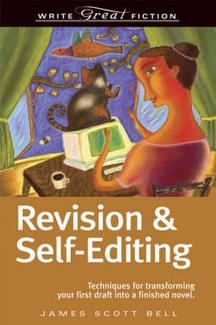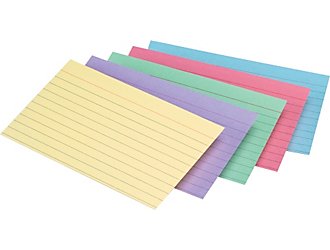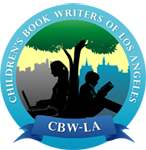Last Saturday, January 29th, our writing group met up again at Borders Torrance. We had three new faces join us for the meetup on “Rewriting Your Manuscript.”
A usual, we started our meeting with introductions. After stating our names, current projects and answering a strange but creative question from the box, we proceeded to the next activity.
I like to start our meetups with a hopeful, positive note, so before diving into our main topic, I had everybody join in an activity inspired by the recent SCBWI-LA Westside schmooze.
In that schmooze, Rita told us about her Illustrator friend whose instructor required his students to spend 15 minutes illustrating three dreams or goals that they wanted to achieve. They put this illustration in an envelope and forgot about it until a year later. When they opened their illustration, they realized that all the dreams they had illustrated had come true.
I explained to the group, that though it seems like magic, the principle behind this activity is the same principle behind the Harvard study: In 1964, all members of the Harvard Business School graduating class said that they had clear goals they wanted to achieve. However, only 5% of them took the time to write these goals down. A follow up study 20 years later revealed that 95% of those who wrote down their goals were able to achieve all of them. Among the other half of the class who said they had goals but didn’t write them down, only 5% reached their expected goals.
The truth is when we write down our goals, it becomes a written contract to ourselves. It sparks personal motivation within us to achieve these goals. And since we’ve written down exactly what we want to achieve, we see our goals more clearly, and our brain starts seeing innovative ways to achieve them.
I then handed out pieces of blank paper. I instructed them to write down their writing-related dreams and goals for 5 minutes straight. I encouraged them to write down all the details they could think of-- the name of the agent who is going to them back and say “I’d like to represent you”, the name of the publishing house who is going to give them a six-book deal, the color of the dress they’re going to wear when they accept the Newbery medal,etc.
The activity helped us get into a positive and hopeful mindset. We were now ready to tackle the topic of Rewriting.
I gave out handout1 which described the four types of editing: Proofreading/Copyediting, Line Editing , Content/Developmental Editing, and Heavy/Substantive Editing.
We discussed the difference between rewriting and editing, the four kinds of editing, and the different processes of writing, just to get a clearer picture of what rewriting means.
We agreed that there are generally four stages to writing a novel:
Stage 1: Writing the First Draft
Stage 2: Rewriting
Stage 3: Editing
Stage 4: Copyediting/Proofreading
Ideally when we write the first draft, we don’t stop to edit ourselves. Grammar, punctuation, spelling and all the nitty gritty things don’t matter at this stage.
What matters is that our stories have a beginning, middle and end, and that it gets finished.
Once we are done with our first draft, we move into the second stage of writing, which is rewriting/revising our work. In this stage, we go through our first (or 2nd or 3rd) draft with a creative eye. This means that spelling, punctuation and grammatical errors shouldn’t distract us from polishing and tightening our stories.
Instead, our focus is to fix the story itselfundefinedcharacter, plot, setting, etc. Before we even begin to actually rewrite our story, we must do some content editing. This means we have to look at the flow and the structure of our story.
After developmental editing, usually comes substantive editingundefinedwhich means we reorganize paragraphs, sections, or chapters for overall clarity or readability.
Elements of style such as punctuation, spelling, word usage, grammar and sentence construction fall under the third stage.
Copyediting/Proofreading is the final stage before we send off our manuscripts. Here is where we check that everything is totally correctundefinedthere are no typos, the format is perfect and the manuscript is ready for an agent’s eyes.
Content editing is basically what we do when we revise for Story. Substantive or Heavy editing is similar to revising for Structure, since this is the part of rewriting where we rearrange our scenes, chapters (and even paragraphs) so that our story can flow smoothly.
Before we can Revise for Story or Structure, however, there are certain steps we must take in order to prepare for a major rewrite.
James Scott Bell in his book REVISION & SELF-EDITING lists down 6 Steps to follow before rewriting. I added my own tips, as well as other authors’ tips I found while researching the topic, and shared this with the group.

1. The Cool-Down Phase
2. The Preparation Phase
3. Print Out and Prepare a Fresh Copy
4. Get Ready to Read
5. Read
6. Analyze
*** You can check out James Scott Bell’s article here:
Once we’ve done all these things, we’re ready to do some actual rewriting based on the many notes we made.
The next thing we need to do is gather all our needed materials:
- Manuscript copy
- Favorite editing pens
- Notebook/pad where we jotted down possible revision notes
- Other notes that we created while working on the book, plus maps, charts, diagrams, character descriptions, etc, which we used while writing the novel.
Robert J. Ray, in his book The Weekend Novelist Rewrites the Manuscript, says that there are three important elements to consider when rewriting: Story, Structure and Style. When you rewrite, always rewrite for structure and story first When story hums and structure runs smooth, work on Style.
Revising for Story
Freelance editor Victory Crayne says the following things:
- Content is King. Your story may have technically correct English, but still fail to sell.
- The first draft is often for you, the writer. Now go back and rewrite it for your readers.
- Writing to entertain is much harder than writing perfect English. Writing to entertain so well that hundreds of thousands of readers can't wait until your next book comes out requires a whole lot more. It requires two critical ingredients: (1) a great storyline and (2) excellence in storytelling. Just writing perfect English won't get you there.
It’s important that we know what our story is really about before we even try to rewrite entire paragraphs or chapters.
Revising for Story, also known as content editing, can save us a lot of time and trouble.
As a basis for our discussion on rewriting for Story, I used author Holly Lisle’s awesome article on One-Pass Manuscript Revision: From First Draft to Last in One Cycle.
You can read the whole thing here:
In this article, she recommends going through the process of discovery in order to get your story right. She suggests activities for figuring out our manuscripts’ themes, sub-themes and story arc.
Revising for Structure
Every story has a three act structure, also known as the beginning, middle and end. Knowing our story’s structure, allows us to understand what’s supposed to happen within each part.
For instance, in the Beginning, we’re supposed to introduce the reader to the setting, the characters and the situation or conflict they find themselves in, as well as their goals. When we revise our manuscript, we must figure out if we have accomplished this or not.
Peder Hill’s article on Conflict and Character within Story Structure was a great jumping off point for our discussion on revising for structure.
Afterward, we discussed some techniques for revising structure. I suggested that the use of index cards was a great way for figuring out the flow of a story.
In the index cards, we write down the title of our scene/chapter, along with a scene/chapter description. We can even assign a particular index card color to each of our major characters/major storylines.

Once we’ve finished our index cards, we lay them out on a big table or on the floor, and figure out if our story is flowing smoothly based on the scene descriptions. If not, we rearrange the index cards until the story does flow.

Picture from Chris Bell's blogpost on Manuscript Mapping.
Check out her article here.
I also suggested the use of the software program Anthemion Café Writers Storylines, as this is similar to the index card technique.

Holly Lisle’s article: One-Pass Manuscript Revision: From First Draft to Last in One Cycle, once more came in handy. In the final part of our meetup, we discussed steps to take in the actual rewriting of our manuscripts.
Towards the end of our meetup, I gave out a list of writing books which I found helpful in my own process of manuscript revision. Other members also suggested books they found useful.
Our heads were buzzing with a boatload of information by the time we ended the meetup. All of us had our minds set on rewriting our manuscripts based on what he had learned and shared with each other that day.





